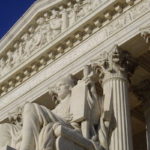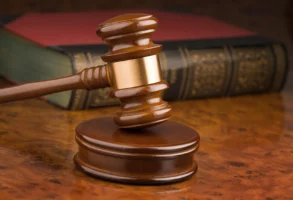
Published November 20, 2018
EPPC President Ed Whelan was interviewed by The Politic, an undergraduate journal at Yale, about right vs. left on the Supreme Court and more.
THE POLITIC: A lot of our readers, mainly Yale students identify as left-leaning or politically liberal. Could you very briefly define what the Conservative and Liberal divide in the Supreme Court is? What does it mean to be a Conservative in the judiciary?
ED WHELAN: I think the divide between conservatives and liberals can fairly be defined in different ways by different people. Let me take a stab. I think one of the divides is between originalism, or original-meaning jurisprudence, on the right, and the so-called “living constitution” on the left. The original-meaning approach to the Constitution takes the Constitution seriously as a legal text. Originalists maintain that provisions of the Constitution, obviously including all the amendments, should mean what they meant when they were adopted – and that the original public meaning of the Constitution’s provisions constrains Supreme Court Justices just like it governs everyone else.
To take an example that I first used at a time when I thought the matter was beyond political controversy, the Constitution provides that in order to be eligible to be president, one must be a “natural born Citizen.” What does that phrase mean? Well, interestingly in all the disputes that have happened over recent years over what that phrase means, the effort that nearly everyone has made is to try to understand what it meant when it was adopted. That illustrates the elementary common sense of the originalist approach. By contrast, a living constitutionalist approach might ask, “what does this mean to us today?” I think that is an inquiry that simply invites judicial invention.
I suppose I should spell out what the living constitutionalist approach is, although obviously advocates of it can speak to it better than I can. The core proposition is that, “oh, the Constitution is a document that changes over time to adapt to the needs of a changing society, and it is up to judges to change what its terms mean”. Well, an originalist would respond: “Look, the Constitution, broadly speaking, gives plenty of flexibility to the democratic processes to adapt policies over time, and it also allows for amendments. We don’t need to have judges in the vanguard, imposing their own views of what changes are necessary.” So in any event, this divide between originalism and living constitutionalism is one difference between the Right and the Left. But I should say there are folks on the Left now who identify as originalists, or progressive originalists, so it’s not as clean a divide as it was ten or fifteen years ago.
There is a second divide between the Left and the Right, a divide that’s often contested in terms of just what it means. And that is the divide between judicial activism and judicial restraint. Advocates of judicial restraint would say that when the Constitution is unclear, after the interpretive methodology has been exhausted, it is left to the democratic processes to decide, and that justices lack authority to override a democratic enactment when they can’t say that an enactment clearly violates the Constitution. Proponents of judicial activism would say, “no, Justices are not so bound, and they have a lot more freedom to impose their views.” Now, I should say there’s a lot of debate back and forth, with folks on the Left alternating between saying, “there’s no such thing as judicial activism,” and “you’re the judicial activist.” There’s also the libertarian strain of judicial activism that I and others, in some of its manifestations, have maintained may well involve judicial activism. But in any event, this debate between judicial activism and judicial restraint is a second divide that does not exactly mirror the living constitution-originalism debate.
And then a third debate that we saw more clearly some years ago, when President Obama was articulating his standard for selecting Supreme Court justices, was a divide between the understanding of the judge as an impartial arbiter, as an umpire, to use the common metaphor, versus the judge as someone who should indulge his or her own sense of empathy in deciding what the law means. And again, this divide broadly reflects, but is not necessarily the same as, the first two divides that I raised.
In one of your interviews with the New York Times, you said that “Conservatives believe with good reason that liberal judges will twist the Constitution and statutes to reach whatever result they want.” What are the main cases you’ve worked on that have really shaped how you think today? In other words, why do you believe what you believe?
Well, my views are shaped not only by cases I worked on, but obviously also by reading Supreme Court rulings in cases that I had nothing to do with. That said, I was a law clerk under Justice Scalia during the 1991-1992 term, in which the Supreme Court decided a number of major cases. For instance, Planned Parenthood v. Casey (1992) was a ruling in which the Court had the opportunity to correct what I regard as the grave error in Roe v. Wade (1973). It instead retained much of Roe and, in a joint plurality opinion by Justice Kennedy, O’Connor, and Souter, espoused a very extravagant concept of the judicial role.
That same view of the judicial role is manifested in the more recent decisions to rule invalid the federal Defense of Marriage Act and to impose a constitutional right to same-sex marriage. On all these issues, I want to emphasize that the conservative view is not that the Constitution imposes our position on those issues, but rather that it leaves matters to the democratic processes for decision. The approach that most originalists take is one that is much more empowering of the democratic processes. That’s not an approach that involves misreading the Constitution and saying that only our position is constitutionally permissible.
You said that a lot of originalists believe decisions should be left to the democratic processes. Could you contextualize that idea for me on the issue of same sex marriage? How could the democratic processes make decisions about same sex marriage in a way that does not change the original meaning of the Constitution?
Well on that particular question, my position and that of most originalists is that the Constitution left matters to the states to decide whether or not to redefine what marriage is. Therefore, states could, if they chose to do so, experiment with defining marriage to mean any relationship between two adults, or they could maintain the millennia-old definition of marriage as a male-female union. There’s the flexibility for different states to take different approaches.












